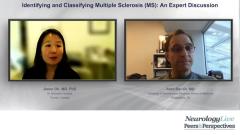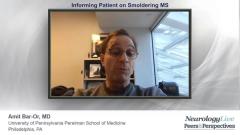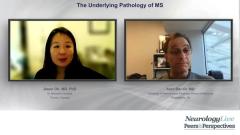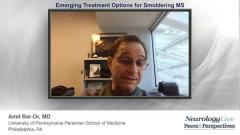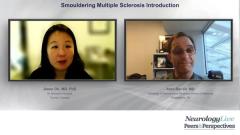
Navigating the Complex Pathology of Smouldering MS
Experts explain the biological drivers underlying smouldering multiple sclerosis (MS) and how it might impact treatment modalities.
Episodes in this series

Transcript
Jiwon Oh, MD, PhD: I think you’ve highlighted 2 of the key biological processes that we think drive smoldering MS [multiple sclerosis], which include chronic active lesions and subpial inflammation and demyelination. But would it be safe to say that there are likely additional different biological drivers that we may or may not even be aware of?
Amit Bar-Or, MD: Absolutely. And so, what I described in terms of the cortical and periarticular pathology and the rim lesions or expanding lesions relates to what we think may be inflammatory contributions to the nonrelapsing smoldering or progressive disease. But there are multiple other mechanisms that have been invoked sort of more on the degenerative side. They include, for example, issues of stripping of myelin results in the axons and their neurons having to work harder, getting into issues of supply not meeting demand and mitochondrial issues that lead to petering out of cells over time. So, the stripping away of the support cells can also limit the capacity of cells like astrocytes to handle toxic factors like glutamate, for instance, so there may be more glutamate-mediated cytotoxicity. There are issues with channel redistribution and again the inability to support the normal function of cells and that these all may add up and there’s a very interesting interface between inflammatory and degenerative mechanisms. So, an important point is that historically people used to say relapses are inflammation and progression is degeneration. Clearly degeneration is one piece, but inflammation also contributes to the nonrelapsing process. I would add that in addition to all those mechanisms that I mentioned, and many are likely to be playing out at the same time, comorbidities have clearly been associated with people living with MS getting worse more quickly and whether the comorbidities, particularly vascular comorbidities, are actually driving the MS process to be worse or representing another process that is creating injury and loss of reserve on top of which one superimposes MS and then aging as well where there’s some normal age-related petering out of structures and as people with MS have lost reserve from prior injury they may experience the process of aging in a sense sooner and to a greater extent. So, all the more reason for us to do everything we can early on to prevent new damage, try to preserve reserve to the extent that we can, and of course work hard to limit the potential impact of comorbidities and hopefully change trajectories of the smoldering injury.
Jiwon Oh, MD, PhD: I don’t know how you do it, Amit, but you somehow managed to summarize the evolving science of our understanding of smoldering MS in 3 minutes. So, thank you for that overview.
Transcript was AI-generated and edited for clarity.
Newsletter
Keep your finger on the pulse of neurology—subscribe to NeurologyLive for expert interviews, new data, and breakthrough treatment updates.

